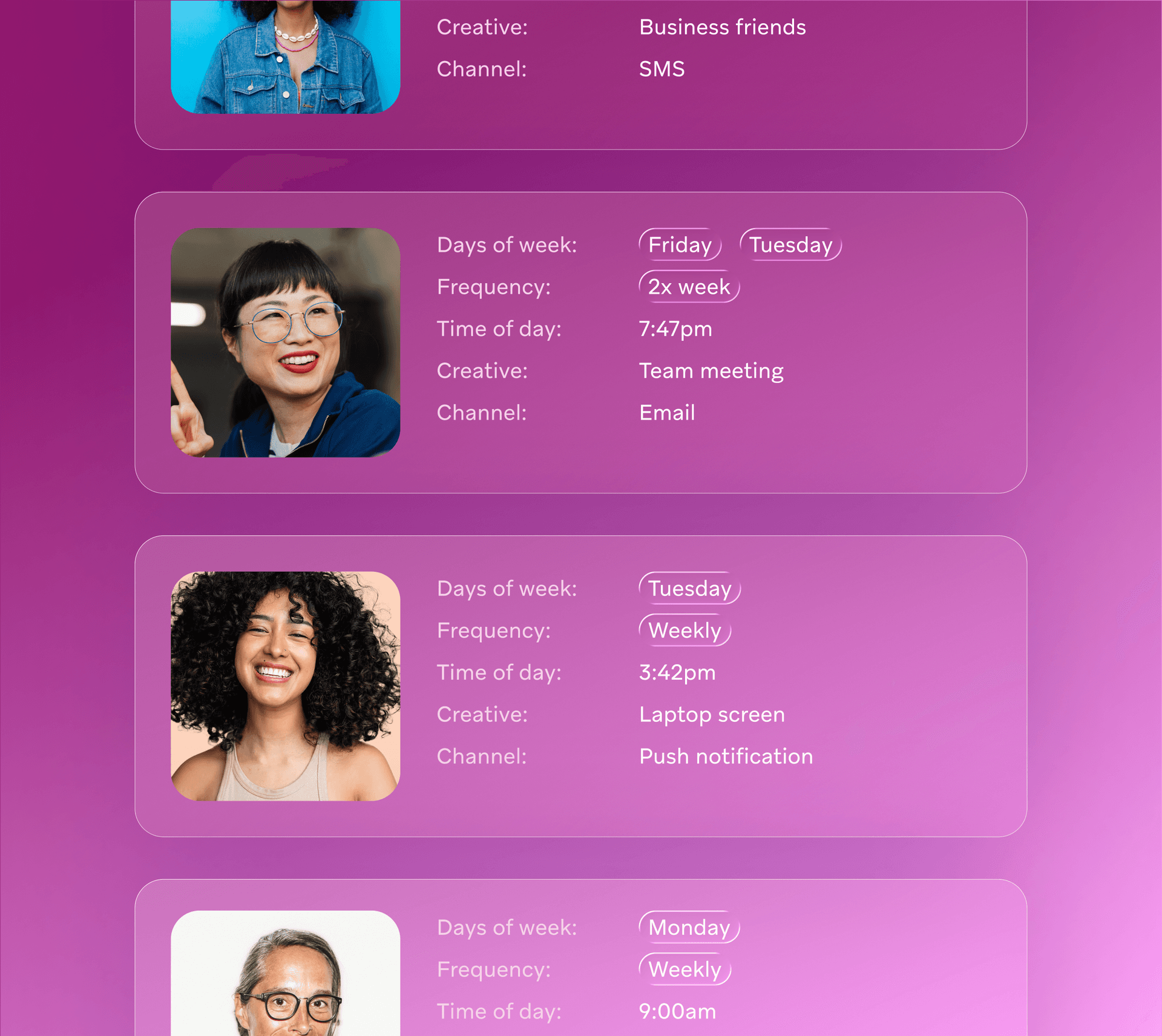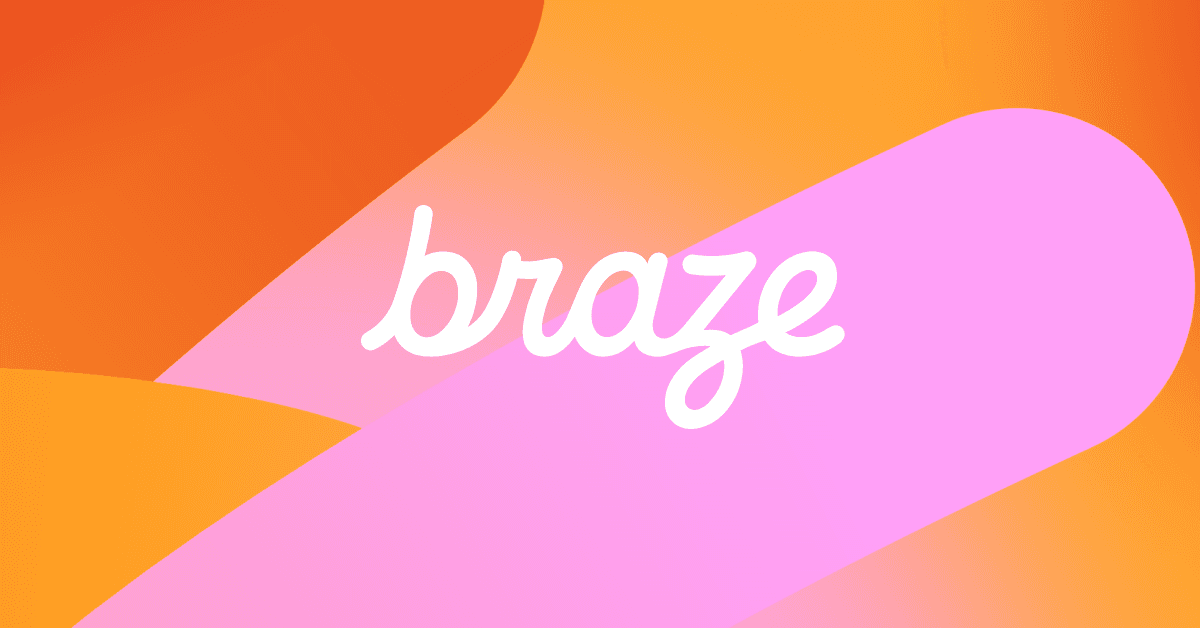Beyond the inbox: How to engage with Gen Z where they really are
Published on November 25, 2025/Last edited on November 25, 2025/6 min read


Courtney Baum
Product Marketing Manager, BrazePicture this: A Gen Z shopper gets a buzz on their phone—not an email notification, but a personalized push about a product drop. They tap instantly. For this generation, connection happens in real time, on the channels they use most. While every generation values messages that feel personal and authentic, Gen Z cares just as much about how those messages reach them. The brands that win their attention aren’t the loudest in the inbox; they’re the ones that show up seamlessly in their digital lives with messages that feel timely, relevant, and worth engaging with.
Gen Z is more than just the first fully digital generation—they’re also the most values-conscious. They seek out brands that feel genuine, transparent, and aligned with their personal beliefs. They want to connect with brands that reflect who they are and what they stand for, and they’re quick to disengage when those connections feel inauthentic. For marketers, this means creating experiences that go beyond simple promotion, but instead tell real stories, reflect shared values, and build trust through every touchpoint.
Where to reach Gen Z
While email remains the preferred communication channel for consumers, holding steady at 42% in both 2023 and 2025, generational differences are beginning to influence how audiences engage with brands. Younger consumers—particularly Gen Z—are showing declining interest in receiving brand emails, with preference dropping from 39% to 32% over the same period. Many Gen Z consumers feel overwhelmed by the growing volume of promotional emails over the past two years, and according to Accenture, 74% of consumers who receive too many messages from a brand ultimately choose not to make a purchase.
So, where are younger audiences heading? Gen Z is turning to mobile channels—brand apps, push notifications, and SMS—to connect with the brands they love. As the first digital-native generation, they spend more than six hours a day on their phones, far more than older age groups. To capture their attention, brands need to show up on the platforms Gen Z uses most and invest meaningfully in mobile engagement.
Mobile apps rank among the top three preferred channels for consumers receiving marketing communications from brands they already know. While not every message type is ideal for mobile, Gartner research showed that Gen Z consumers favor mobile-friendly channels for updates such as product announcements, account alerts, promotions or discount offers, and customer feedback. Speaking of customer feedback, Gen Z is known to be the generation most likely to complain or leave a negative review, so give them the opportunity to have their voices heard with an in-app survey like the examples below!

How to reach Gen Z
To reach Gen Z, brands need to show up where they already are—and that starts on mobile and social. This generation lives on platforms like TikTok, Instagram, and YouTube, where discovery happens through creative storytelling and active participation. Integrate your mobile app and social campaigns to create interactive, visually engaging content that feels native to the platform, and less like an ad. Keep it concise, dynamic, and designed to capture attention within seconds.
Personalization is also key, as 87% of Gen Z consumers prefer tailored recommendations. To deliver messages that reflect what users have explored, purchased, or shown interest in, brands need a platform that captures and unifies customer data across channels—ensuring every touchpoint is informed by a complete view of the customer. AI decisioning tools, like the BrazeAI Decisioning Studio™, can take this a step further by automatically optimizing which message to send, on which channel, and at what time. The result is outreach that feels like a genuine conversation rather than a generic campaign, making every interaction more relevant and impactful.

Consider how Kueski approached this challenge. As a leading buy now, pay later platform in Latin America, Kueski realized that email alone couldn’t satisfy customers overwhelmed by crowded inboxes. To reach users more effectively, the team introduced mobile-first channels like WhatsApp and push notifications—driving a 15% lift in conversions through timely, personalized outreach. Their success proves that impactful engagement isn’t about sending more messages, but delivering smarter, more relevant ones.
Even though Gen Z may not live in their inbox, email still plays a role. According to Vertical Response, they see it as a more formal channel, best suited for confirmations, exclusive offers, and long-form storytelling. To make your emails resonate, focus on compelling visuals and data-driven personalization, and continuous testing to find the right tone, timing, and cadence. The goal isn’t more emails, it’s more intentional communication that earns their attention.
Final thoughts
Gen Z’s shifting preferences are a clear signal: traditional email marketing alone is no longer enough to capture attention from younger, digital-native audiences. Brands need to rethink how, where, and what they communicate to stay relevant. Here are a few key takeaways:
- Go mobile-first: Prioritize push notifications, SMS, and in-app messaging to reach Gen Z where they spend most of their time.
- Personalize every interaction: Gen Z expects brands to understand them on a deeper level. Move beyond basic segmentation to deliver messages that reflect their interests, behaviors, and values in real time.
- Connect their digital worlds: Gen Z moves fluidly between platforms - discovering brands on social, exploring through apps, and revisiting via email. Create seamless journeys across channels to keep your messaging consistent and easy to engage with.
- Keep content concise and visual: Short videos, dynamic visuals, and interactive elements capture attention faster than text-heavy messages.
- Listen and respond: Encourage feedback through surveys or reviews and act on their feedback—show Gen Z that your brand values their voice.
The bottom line is that Gen Z’s digital habits are reshaping what effective engagement looks like. For marketers, that means moving beyond the inbox to build seamless, mobile-first experiences that feel personal, authentic, and timely. Success lies in orchestrating cross-channel journeys that meet consumers in the moments that matter—combining data, creativity, and empathy to deliver messaging that feels less like marketing and more like connection.
To learn more about the messaging channel landscape, download our Secret lives of channel guide today, covering how Banners and webhooks—and everything in between—support great customer engagement.
Related Tags
Be Absolutely Engaging.™
Sign up for regular updates from Braze.
Related Content
View the Blog
How behavioral marketing turns data into personalized experiences

Team Braze

December 2025 Bonfire Marketer of the Month: Jagex’s Emma Oliver

Emily Calderon

2025 Braze year in review: Major moments, milestones, and evolutions
